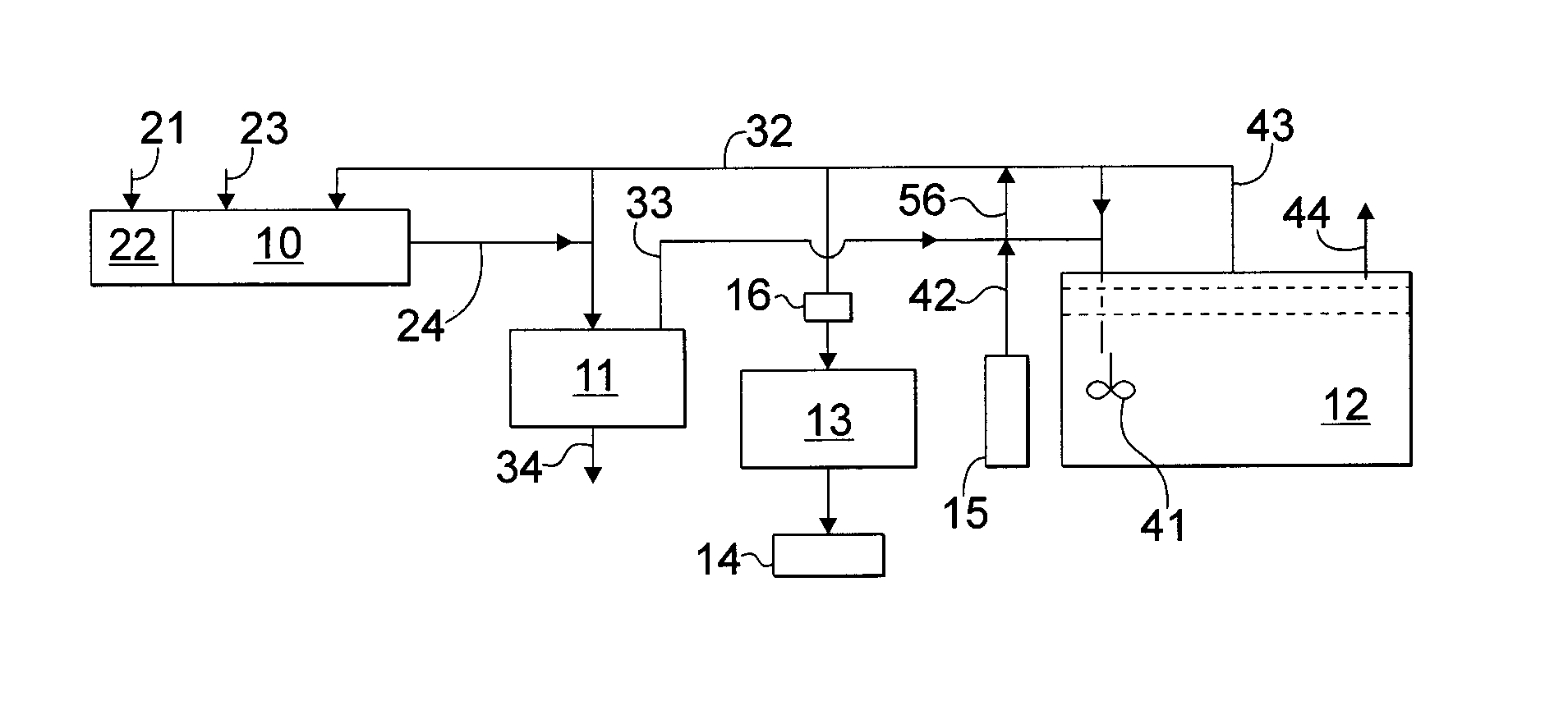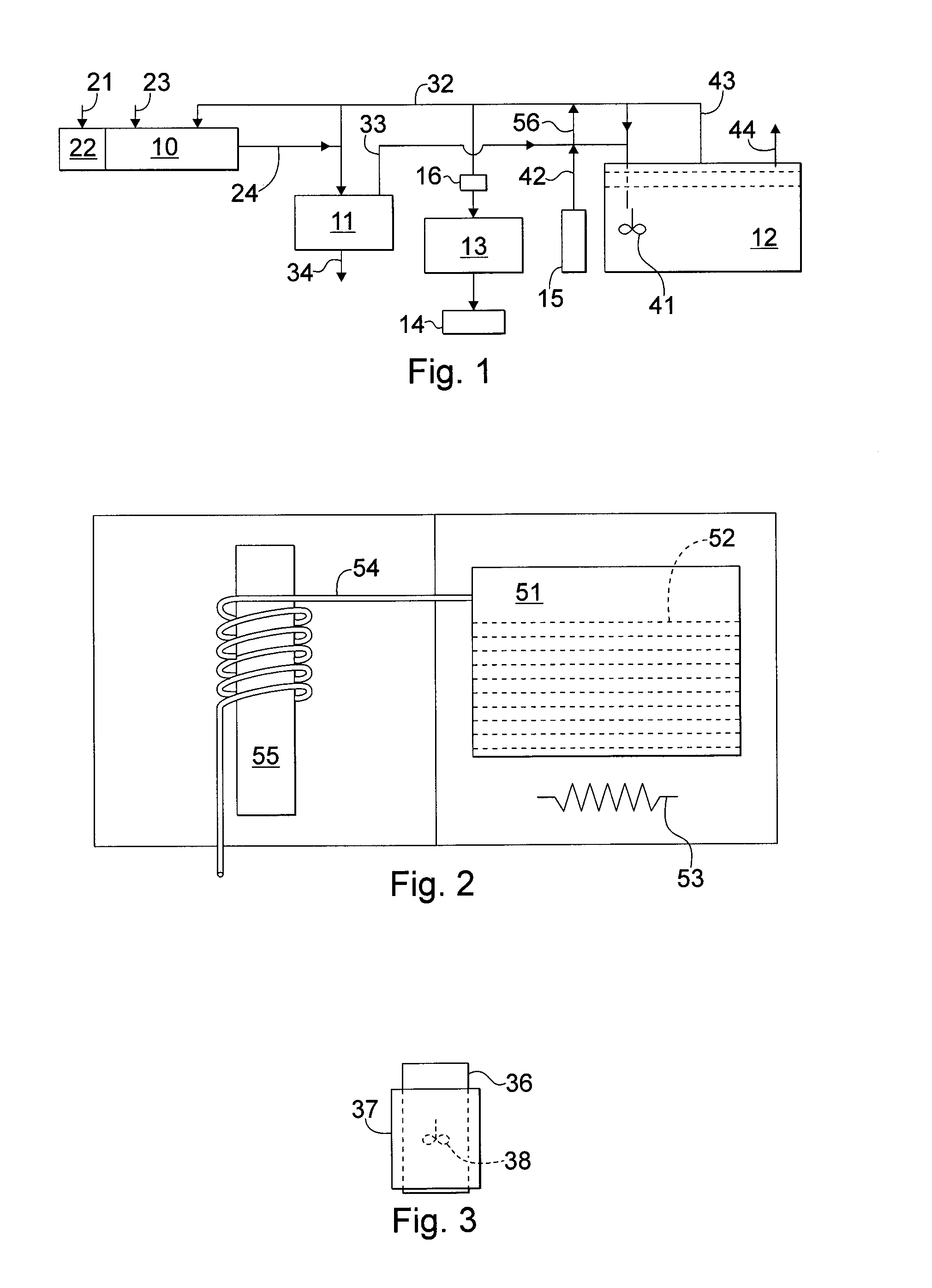Apparatus and method for producing fuel ethanol from biomass
a technology of biomass fuel ethanol and mobile apparatus, which is applied in the direction of biofuels, biomass after-treatment, bioreactors/fermenters, etc., can solve the problems of alkali/oil treatment taking several hours, and achieve the effects of extending batch fermentation, enhancing the performance of these microorganisms, and increasing ethanol production
- Summary
- Abstract
- Description
- Claims
- Application Information
AI Technical Summary
Benefits of technology
Problems solved by technology
Method used
Image
Examples
Embodiment Construction
[0015]The apparatus of the present invention is preferably mobile and may comprise separate units mounted on trucks or trailers for transportation to collection sites where the stover or other biomass is produced. Such site may be in the fields where the bioproducts are grown or may be at a station in the vicinity of the fields to which the biomass products are transported by conventional farm equipment.
[0016]As indicated in FIG. 1, the apparatus is comprised of several units, including a collector 10, pretreatment unit 11, a fermentation reactor 12, an extractor 13, an ethanol receptacle 14 and may include a vegetable oil reservoir 15 and a filter 16.
[0017]The collector 10 is adapted to be fed with biomass as indicated by the arrow 21. Preferably, the collector includes a macerator 22 which comminutes the biomass prior to mixing with a hydrolyzer which is introduced into the collector as indicated at 23. The comminuted biomass is thoroughly mixed with the hydrolyzer in the collecto...
PUM
| Property | Measurement | Unit |
|---|---|---|
| length | aaaaa | aaaaa |
| diameter | aaaaa | aaaaa |
| length | aaaaa | aaaaa |
Abstract
Description
Claims
Application Information
 Login to View More
Login to View More - R&D
- Intellectual Property
- Life Sciences
- Materials
- Tech Scout
- Unparalleled Data Quality
- Higher Quality Content
- 60% Fewer Hallucinations
Browse by: Latest US Patents, China's latest patents, Technical Efficacy Thesaurus, Application Domain, Technology Topic, Popular Technical Reports.
© 2025 PatSnap. All rights reserved.Legal|Privacy policy|Modern Slavery Act Transparency Statement|Sitemap|About US| Contact US: help@patsnap.com


